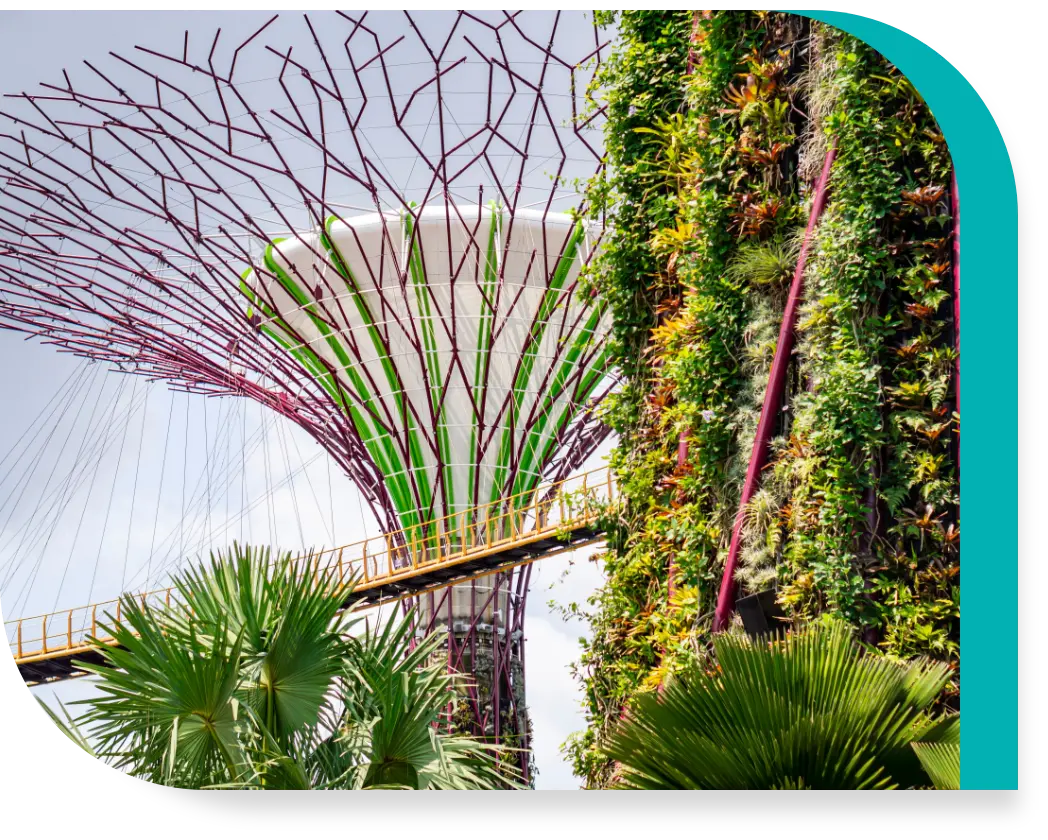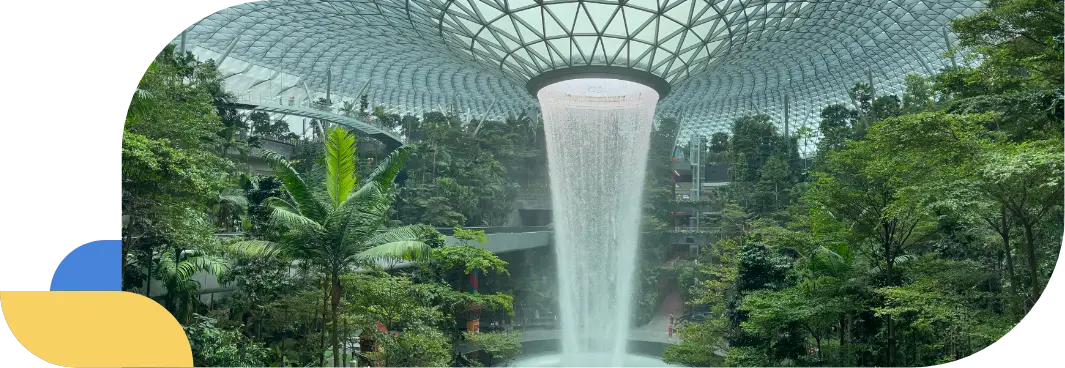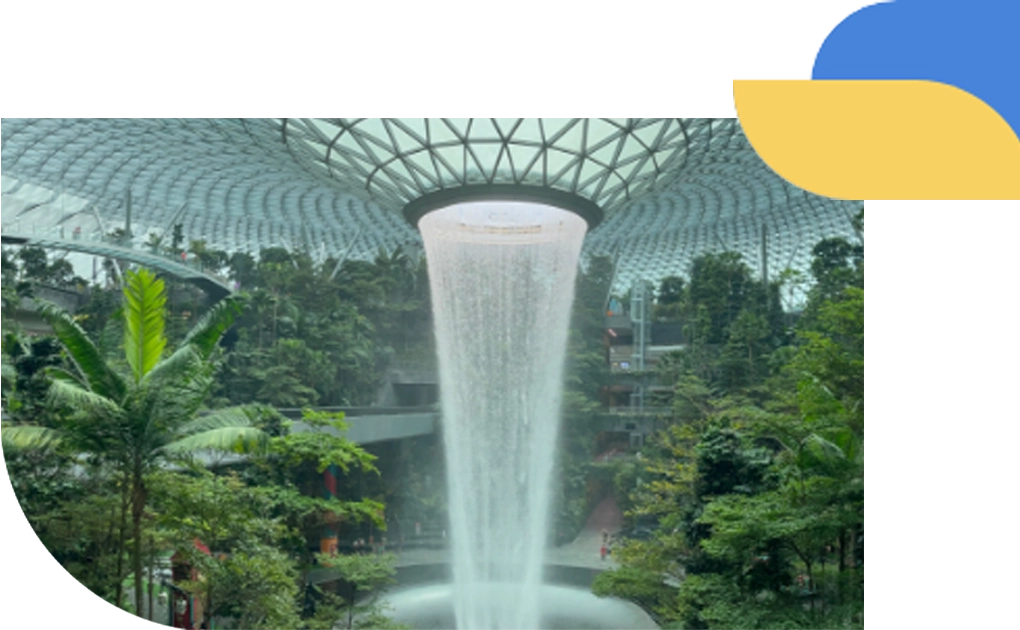Sustainable tourism: Singapore’s great experiences with small footprint
Singapore can expect tourism numbers to increase steadily in the coming years. The Singapore Tourism Board (STB) has reported that tourism spending in 2024 is now back on track since the pandemic, and is anticipated to surpass its previous track record1. International visitor arrivals picked up by 21% in 2024, enabling a growth in the tourism sector across all categories, with sightseeing increasing by 25% and accommodation growing by 17%1.
As much as these numbers are celebrated, STB’s role is also to ensure that Singapore continues adhering closely to its vision of becoming a City in Nature2 with clear roadmaps and programmes that keep sustainability efforts at the forefront of tourism development.
Sustainability however, is not just a trending buzzword of the last couple of years. A closer look at some of Singapore’s key tourist attractions - many of them located in the Marina Bay area - will reveal cleverly-conceived green designs implemented, not just recently, but from more than a decade ago. This shows foresight for a burgeoning tourist sector as well as one with significantly reduced carbon emissions.

Since the launch of Gardens by the Bay in 2012, the Supertrees structures have now become a poster image for Singapore tourism - their ‘Avatar-like’ design even becoming a source of inspiration for movies. But they are more than just a sight to behold. Hidden high above view, and nestled within their wiry branches, are solar photovoltaic panels that harvest solar energy3. Their trunks have become ‘vertical gardens’ that house approximately 159,000 epiphytes – orchids, ferns, bromeliads and flowering vines3. And each of these trees acts as a chimney stack, expelling non-toxic fumes from a biomass boiler where plant waste from Gardens by the Bay is burnt and converted into fuel3.
But that’s not all. The two glass domes that make up the Cloud Dome and the Flower Dome in Gardens by the Bay are designed as reversed glasshouses, to ensure that sunlight gets in, but not the heat3. So more than 1 million plants within enjoy sunlight to the full, while temperatures are being efficiently kept at a comfortable 23-25°C3. Perfect for the plants to thrive, and perfect for tourists looking for respite from the Singapore heat.
In recent years, there has been a substantial rise in demand for sustainable travel2. A study done in 2024 by Booking.com notes that 83% of travellers confirm that sustainable travel is important to them, and 75% of global travellers saying that they want to travel more sustainably over the next year2.
But before travellers began seeking to reduce their carbon footprint, hotels such as the Marina Bay Sands were already paving the way for luxurious but sustainable stays since opening in 2011. With its distinct silhouette against the Singapore skyline, the Sands’ famous SkyPark Infinity Pool is fitted with 536 solar panels atop the walkway, generating enough energy to power the entire cantilever’s lighting4. The hotel rooms are installed with room control units that adjust the interior air-conditioning and lighting accordingly to minimise energy consumption, while maximising guests’ comfort4. The resort is also equipped with an Intelligent Building Management System which has over 125,000 data points that track energy, water and air quality4.
Since then, we have begun to see many hotel refurbishments pushing the boundaries of sustainable hospitality. More recently, and merely a skip and a hop away across the Bay from the Sands, the Parkroyal Collection made headlines in 2023 for being Singapore’s first Garden-in-a hotel, boasting a number of green innovations, as well as Southeast Asia’s largest indoor sky-lit atrium, featuring over 2,400 plants, trees, shrubs and groundcovers5.
With so much to offer around the Marina Bay area - from entertainment and sightseeing to hospitality and shopping - one ingenious solution keeps the heat away from the entire area while keeping carbon emissions low.
Hidden beneath the ground is SP Group’s Marina Bay District Cooling Network, which is the world’s largest underground cooling network. It currently services 28 buildings in the Marina Bay area including the Marina Bay Sands Integrated Resort Expansion, AXA Tower, IOI Central Boulevard Towers and its latest addition, Suntec City.

The United Nations calls district cooling a “secret weapon” in the battle against climate change6. This network is based around a central chiller plant and channels chilled water along a closed-looped pipe that is connected to each building, to cool temperatures within the building before making its way back to the plant. All the buildings connected to this network reap the benefits of shared efficiencies and space savings, and contribute to a combined avoidance of 20,000 tonnes of emissions annually.
The best part about this network is that it can be continually expanded to connect more buildings - indeed there are plans to expand the network to 32 buildings by 2027. On top of that, any building can also be integrated with SP’s other Sustainable Energy Solutions for more energy-saving benefits. These solutions include photovoltaic solutions, and digital building management solutions such as GET® Insights for smart utilities management and GET® Control for microclimate air-flow management.
Whether it is for sold-out Taylor Swift concerts or for regional climate conferences, Singapore intends to keep welcoming its visitors for better experiences with a reduced carbon footprint.
Contact us to learn more about SP’s Sustainable Energy Solutions.
Footnotes
1Tourism spending in Singapore set to hit all-time high for 2024; bullish outlook for 2025: STB, Straits Times, February 2025
2Tourism sustainability programme, stb.com.sg
3The making of a wonder, BBC.com
4Reducing carbon footprint, marinabaysands.com
5PARKROYAL COLLECTION Marina Bay, Singapore a leader among green hotels in Singapore, Travel Daily Media, February 2025
6District energy: a secret weapon for climate action and human health, unep.org, March 2019

